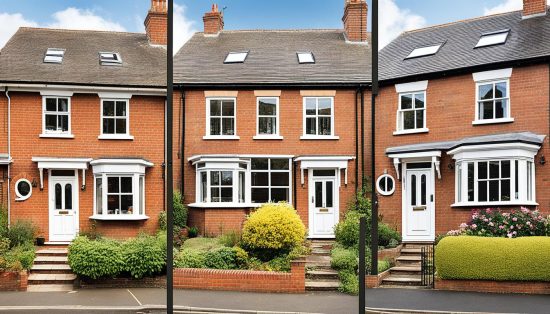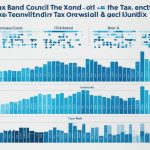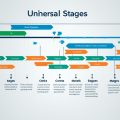Last Updated on: 27th June 2024, 04:38 am
What is Council Tax Band D?
Council tax is a local property tax levied on residential properties in England and Wales. Properties are assigned to different council tax bands based on their estimated value as of a specific valuation date. Understanding these council tax bands is crucial for homeowners, as the band determines the amount of council tax they must pay each year.
1. Council Tax Bands in England
In England, properties are categorized into one of eight council tax bands, labeled from A to H. The band assigned to a property is determined by its estimated value as of 1 April 1991. Band D, which covers properties valued between £68,001 and £88,000 as of that date, is considered the “middle” band and is often used as a reference point for council tax calculations.
2. Council Tax Bands in Wales
The council tax banding system in Wales is slightly different, with properties assigned to one of nine bands, labelled from A to I. The valuation date used for Welsh properties is 1 April 2003, and Band D covers properties valued between £91,001 and £123,000 as of that date.
Regardless of the location, the council tax band assigned to a property is a crucial factor in determining the annual council tax bill. Understanding where your property falls within the council tax band system can help you budget accordingly and potentially challenge your band if it appears to be inaccurate.
| Council Tax Band | Property Value Range (England) | Property Value Range (Wales) |
|---|---|---|
| A | Up to £40,000 | Up to £44,000 |
| B | £40,001 – £52,000 | £44,001 – £65,000 |
| C | £52,001 – £68,000 | £65,001 – £91,000 |
| D | £68,001 – £88,000 | £91,001 – £123,000 |
| E | £88,001 – £120,000 | £123,001 – £162,000 |
| F | £120,001 – £160,000 | £162,001 – £223,000 |
| G | £160,001 – £320,000 | £223,001 – £324,000 |
| H | Over £320,000 | Over £324,000 |
| I | N/A | Over £444,000 |
The table above provides a detailed overview of the council tax bands and their corresponding property value ranges in both England and Wales. This information can be useful for homeowners to understand where their property falls within the banding system and how it may impact their annual council tax bill.

How is Council Tax Band D Calculated?
The calculation of council tax band D is a crucial factor in determining the overall council tax liability for a property. This process involves the Valuation Office Agency (VOA) assessing various elements to assign the appropriate tax band.
Property Valuation on Specific Dates
In England, the council tax bands are based on the estimated value of a property as of 1 April 1991. Conversely, in Wales, the valuation date is set to 1 April 2003. The VOA takes into account the size, layout, character, location, and any changes in the use of the property to determine its estimated value on the relevant valuation date.
Factors Considered in Band Assessment
When assigning a council tax band, the VOA considers a range of factors that contribute to the overall value of the property. These include:
- Property size: The total floor area and number of rooms within the property.
- Property type: Whether the property is a detached, semi-detached, or terraced house, a bungalow, or a flat.
- Property age and condition: The age of the property and its overall state of repair.
- Property location: The desirability and average property values in the surrounding area.
- Property features: Amenities such as a garage, central heating, or additional outbuildings.
Based on the analysis of these factors, the VOA assigns the property to the appropriate council tax band, which directly influences the amount of council tax owed by the homeowner.

Checking if Your Property is in the Correct Band
If you believe your property has been placed in the wrong Council Tax band, you can easily check by comparing it to similar properties in your area. The Valuation Office Agency (VOA) website provides valuable information on the Council Tax bands of other properties, which you can use to assess whether your own property has been correctly banded.
Factors such as the size, age, and location of your property in relation to your neighbours’ can help determine if you are in the right band. By checking council tax band and comparing property bands, you can ensure the council tax band accuracy for your home.
Comparing with Neighbouring Properties
One of the best ways to determine if your property is in the correct Council Tax band is to compare it to similar homes in your local area. Consider the following factors when assessing your property’s band:
- Size of the property (number of bedrooms, square footage, etc.)
- Age and condition of the property
- Location and desirability of the neighbourhood
If you notice that your property is significantly larger, newer, or situated in a more desirable area than your neighbours’ homes, yet it is in the same Council Tax band, it may be worth investigating further.

By checking council tax band and comparing property bands, you can ensure that your home is accurately assessed and that you are paying the correct amount of Council Tax.
Challenging Your Council Tax Band D
If you believe your property has been assigned to the wrong council tax band, you have the right to challenge the decision. This process involves requesting a review from the Valuation Office Agency (VOA), the government body responsible for determining council tax bands in England and Wales.
To initiate a council tax band appeal, you’ll need to provide evidence demonstrating that your property’s band is incorrect. This could include changes to the property since the original valuation or errors in the initial assessment. The VOA will then re-evaluate your property and, if appropriate, adjust the council tax band accordingly.
Key Steps in Challenging Your Council Tax Band
1. Gather evidence: Collect any documentation or information that supports your claim that your property is in the wrong council tax band. This could include details of renovations, extensions, or other changes that have occurred since the original valuation.
2. Contact the VOA: Initiate the council tax band review process by contacting the VOA and requesting a reassessment of your property’s band.
3. Provide supporting evidence: Submit the evidence you’ve gathered to the VOA, clearly explaining why you believe your property is in the incorrect council tax band.
4. Wait for the VOA’s decision: The VOA will review your property and make a determination on whether the council tax band should be adjusted.
5. Act on the outcome: If the VOA agrees with your appeal, your council tax band will be revised, and you may be eligible for refunds on any overpaid council tax. If the appeal is unsuccessful, you can consider further options, such as an appeal to a valuation tribunal.
Remember, the council tax band appeal process can be complex, and the outcome is not guaranteed. However, if you have a strong case and can provide compelling evidence, there’s a good chance of having your council tax band adjusted to a more appropriate level.

| Council Tax Band | Property Value (1 April 1991) | Annual Council Tax (2023/24) – England | Annual Council Tax (2023/24) – Wales |
|---|---|---|---|
| A | Up to £40,000 | £1,235 | £1,122 |
| B | £40,001 – £52,000 | £1,443 | £1,308 |
| C | £52,001 – £68,000 | £1,650 | £1,495 |
| D | £68,001 – £88,000 | £1,858 | £1,682 |
| E | £88,001 – £120,000 | £2,273 | £2,056 |
| F | £120,001 – £160,000 | £2,688 | £2,430 |
| G | £160,001 – £320,000 | £3,103 | £2,804 |
| H | More than £320,000 | £3,715 | £3,365 |
Reasons for Challenging Your Council Tax Band
There are several compelling reasons for challenging your Council Tax band. If your property has undergone significant changes since the original valuation, or if you believe the Valuation Office Agency (VOA) has made an error in assigning your property’s band, you may be able to successfully appeal and potentially reduce your Council Tax bills.
1. Changes to the Property Since Original Valuation
One of the primary reasons to challenge your Council Tax band is if your property has been altered in a way that affects its value. This could include extensions, loft conversions, or other renovations that have increased the size or desirability of your home. If these changes were made after the original valuation, it’s worth investigating whether the VOA has updated the band accordingly.
2. Incorrect Valuation or Band Assignment
In some cases, the VOA may have made an error in their initial assessment of your property’s value or the subsequent assignment of your Council Tax band. This could be due to a miscalculation, inaccurate information, or a failure to account for specific factors that should influence the valuation. If you believe your property has been placed in the wrong band, you have grounds to challenge the decision.
Challenging your Council Tax band can be a straightforward process, but it’s important to gather the necessary evidence and follow the correct procedures. The next section will guide you through the steps involved in challenging your Council Tax band.
How to Challenge Your Council Tax Band?
If you believe your property has been incorrectly assigned to a council tax band, you have the right to challenge the decision and request a reassessment. This process, known as the council tax band appeal process, can potentially lead to a reduction in your future council tax bills.
To begin the challenge, you should first compare your property to similar homes in your local area. This will help you determine if your property has been correctly banded. If you find that your band is higher than that of comparable properties, you may have grounds to submit a challenge.
- Gather evidence to support your case, such as:
- Details of any changes made to your property since the original valuation
- Information on the council tax bands of neighbouring properties
- Property valuations from recent sales of similar homes in your area
- Submit your challenge to the Valuation Office Agency (VOA) in England or the Valuation Office in Wales.
- Provide the evidence you have collected to demonstrate that your property has been incorrectly banded.
- The VOA or Valuation Office will review your case and make a decision, which may result in your council tax bill being reduced if the challenge is successful.
It’s important to note that the council tax band appeal process can take some time, as the authorities will need to thoroughly review the information you provide. However, if your challenge is successful, you may be eligible for a refund on any overpaid council tax from the date of your initial request.
Remember, the how to challenge council tax band process is an important right for homeowners, and it’s worth taking the time to ensure your property is accurately banded and that you’re not paying more than your fair share of council tax.
Consequences of a Successful Challenge
If your challenge to your Council Tax band is successful, the main consequences are a reduction in your future Council Tax bills and the possibility of a refund for any overpayments made in the past. Your Council Tax will be recalculated based on the new, lower band, resulting in lower bills going forward.
1. Reduced Future Council Tax Bills
The most immediate benefit of a successful Council Tax challenge is that your future Council Tax bills will be reduced. This is because your property will be assigned a lower valuation band, which means you’ll pay a lower rate of Council Tax. The amount you’ll save will depend on the difference between your original and new bands, but it can be a significant sum over time.
2. Refunds for Overpaid Council Tax
In addition to lower future bills, you may also be entitled to a refund for any excess Council Tax you have paid since the incorrect banding was first applied. The local council will calculate the difference between what you should have paid and what you actually paid, and issue a refund for the overpayments, subject to a maximum of 6 years’ worth of overpayments.
The consequences of a successful Council Tax challenge can be substantial, both in terms of reduced future bills and the possibility of a council tax refund for previous overpayments. These consequences of a successful council tax challenge can provide much-needed financial relief for homeowners who have been paying too much in council tax.
Conclusion
In summary, Council Tax Band D is a crucial component of the Council Tax system in England and Wales, covering properties valued between £68,001 and £88,000 in England, and £91,001 to £123,000 in Wales. Understanding the banding process, which considers property valuations on specific dates and various factors, is essential for ensuring you are paying the correct amount of Council Tax.
If you believe your property has been incorrectly banded, you have the right to challenge the decision with the Valuation Office Agency. A successful challenge could result in a reduced Council Tax bill and potential refunds for any overpayments. By staying informed about your Council Tax obligations and being proactive in addressing any discrepancies, you can ensure you are contributing your fair share while also maximising your savings.
The key takeaways on Council Tax Band D are that it is a middle-range band based on property valuation, and that you have the right to challenge your band if you believe it is inaccurate. By understanding the Council Tax system and your rights, you can take control of your finances and ensure you are paying the appropriate amount of Council Tax.
FAQ
1. What is Council Tax Band D?
Council Tax Band D is one of the middle bands used to determine the amount of Council Tax owed on a property in England and Wales. The band is based on the estimated value of the property as of specific valuation dates, with Band D covering properties valued between £68,001 and £88,000 in England, and £91,001 to £123,000 in Wales.
2. How is Council Tax Band D calculated?
Council Tax bands are determined by the Valuation Office Agency (VOA) based on the estimated value of a property at a specific valuation date. In England, this is 1 April 1991, while in Wales it is 1 April 2003. The VOA considers various factors when assessing a property’s band, including its size, layout, character, location, and any changes in use.
3. How can I check if my property is in the correct Council Tax Band D?
You can check by comparing your property to similar properties in your area. The VOA website provides information on the Council Tax bands of other properties, which you can use to assess whether your own property has been correctly banded. Factors such as the size, age, and location of your property in relation to your neighbours’ can help determine if you are in the right band.
4. How do I challenge my Council Tax Band D?
If you believe your property has been assigned to the wrong Council Tax band, you can submit a challenge to the VOA. This involves providing evidence to support your case, such as details of property changes or information on the bands of neighbouring properties. The VOA will then review the banding and make a decision, which may result in your Council Tax bill being reduced if the challenge is successful.
5. What are the reasons for challenging my Council Tax Band D?
There are several valid reasons for challenging a Council Tax band, including changes to the property since the original valuation, such as extensions or conversions, as well as errors in the initial valuation or band assignment. If the property has been altered in a way that affects its value, or if the VOA has made a mistake in its assessment, these can be grounds for a successful challenge and a potential reduction in the Council Tax bill.




















No Comments
Leave a comment Cancel